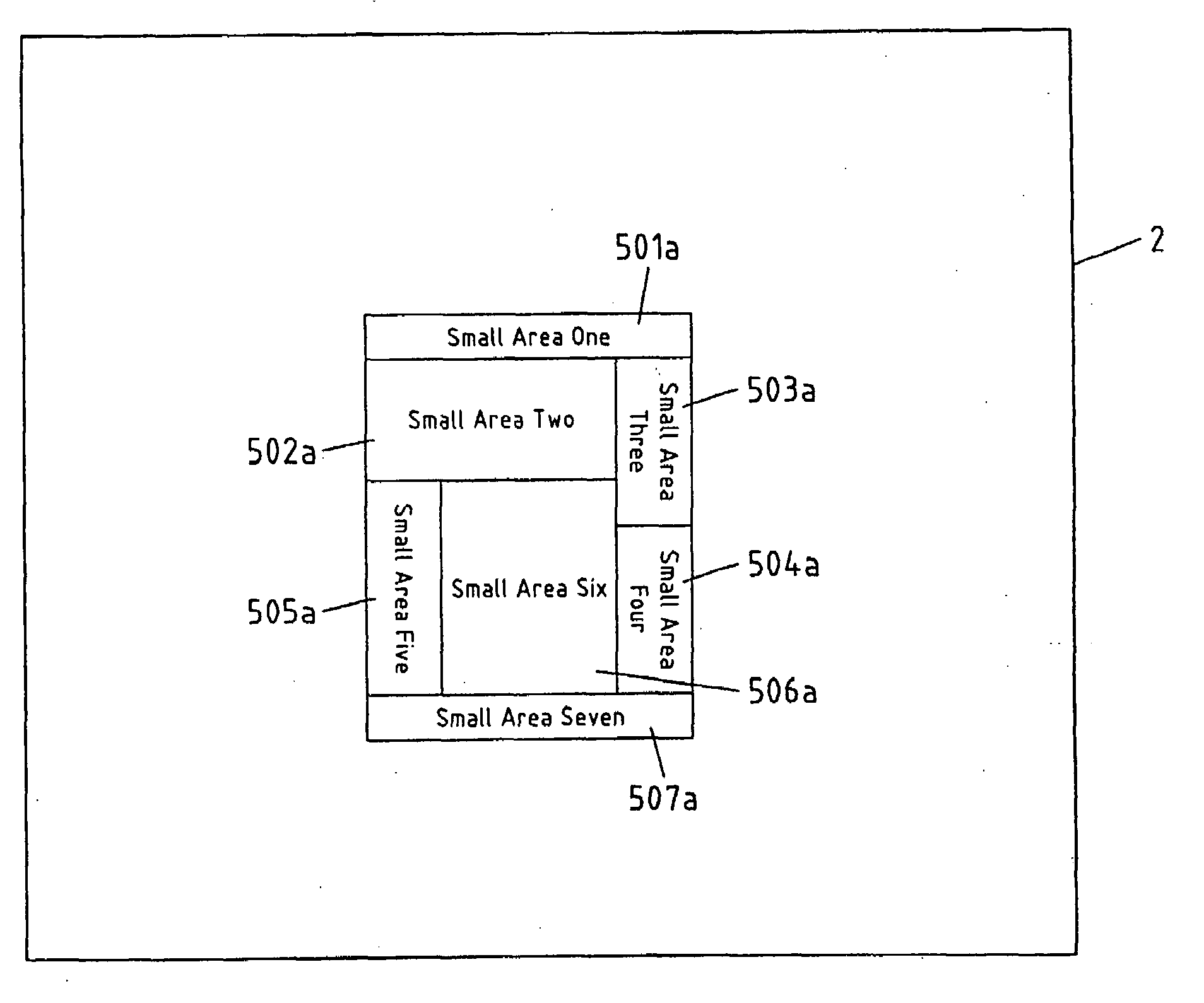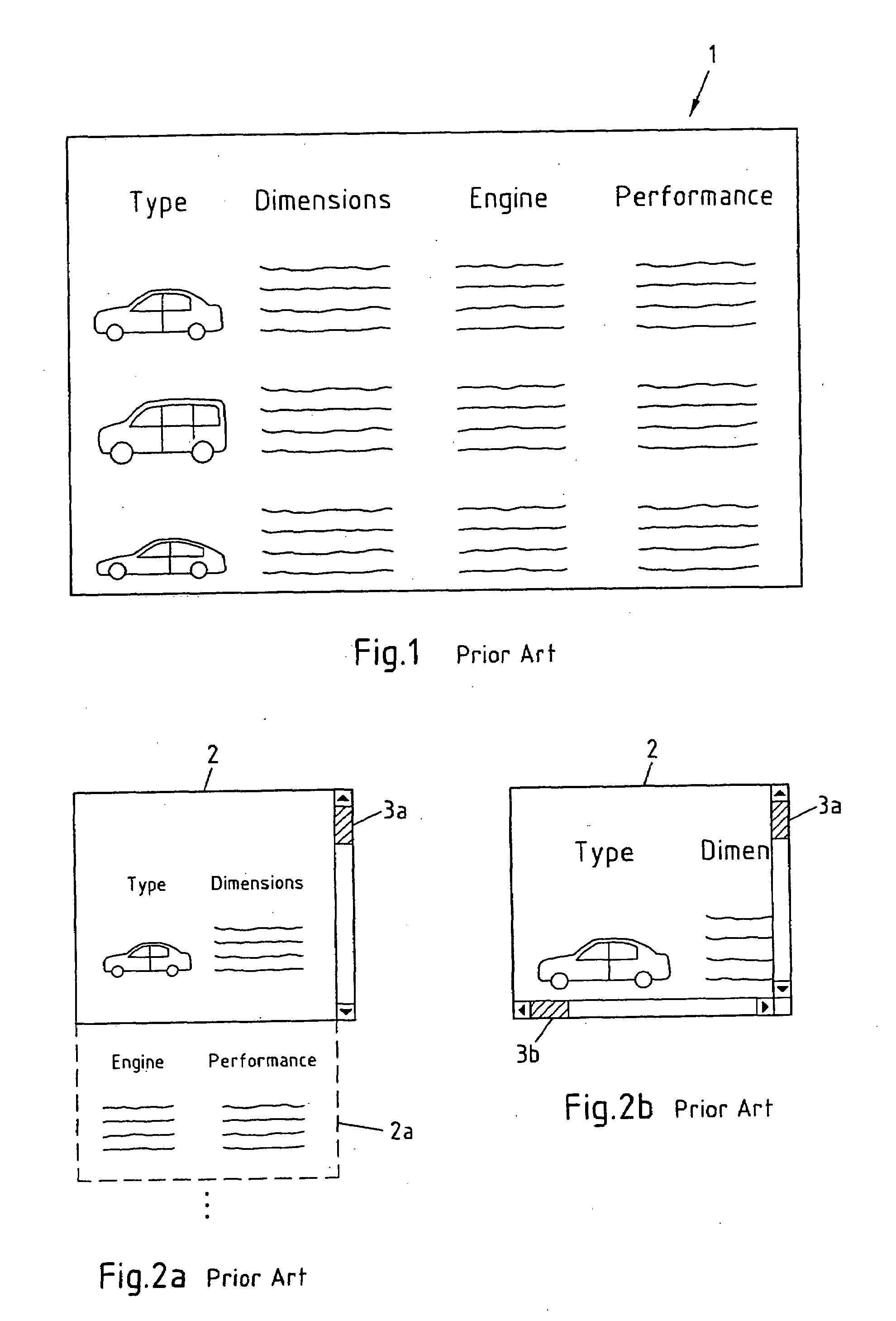Presentation of large objects on small displays
a technology of large objects and small displays, applied in the field of large objects on small displays, can solve the problems of large display sizes, uncomfortable or even annoying users, and the necessity of significantly smaller holding devices, and achieve the effects of reducing content, improving the presentation of large objects, and being more properly inspected and used
- Summary
- Abstract
- Description
- Claims
- Application Information
AI Technical Summary
Benefits of technology
Problems solved by technology
Method used
Image
Examples
Embodiment Construction
[0071]The present invention proposes a method, a device, a system, a computer program and a computer program product for presenting at least a part of an object, wherein at least one object is at least partially divided into a plurality of sub-objects, wherein said plurality of sub-objects is presented in a first representation, wherein at least one sub-object of said plurality of sub-objects is made an active sub-object, and wherein in response to a user operation on said at least one active sub-object, at least one of said at least one active sub-objects is presented in a second representation. Therein, said objects may either be 2D objects or 3D objects, which are then divided into 2D sub-objects and 3D sub-objects, respectively.
[0072]In FIGS. 1 to 6, preferred embodiments of the present invention will be explained that are suited for the presentation of 2D objects. Therein, the 2D objects are denoted as pages, and the sub-objects are denoted as areas. With reference to FIGS. 7a ...
PUM
 Login to View More
Login to View More Abstract
Description
Claims
Application Information
 Login to View More
Login to View More - R&D
- Intellectual Property
- Life Sciences
- Materials
- Tech Scout
- Unparalleled Data Quality
- Higher Quality Content
- 60% Fewer Hallucinations
Browse by: Latest US Patents, China's latest patents, Technical Efficacy Thesaurus, Application Domain, Technology Topic, Popular Technical Reports.
© 2025 PatSnap. All rights reserved.Legal|Privacy policy|Modern Slavery Act Transparency Statement|Sitemap|About US| Contact US: help@patsnap.com



